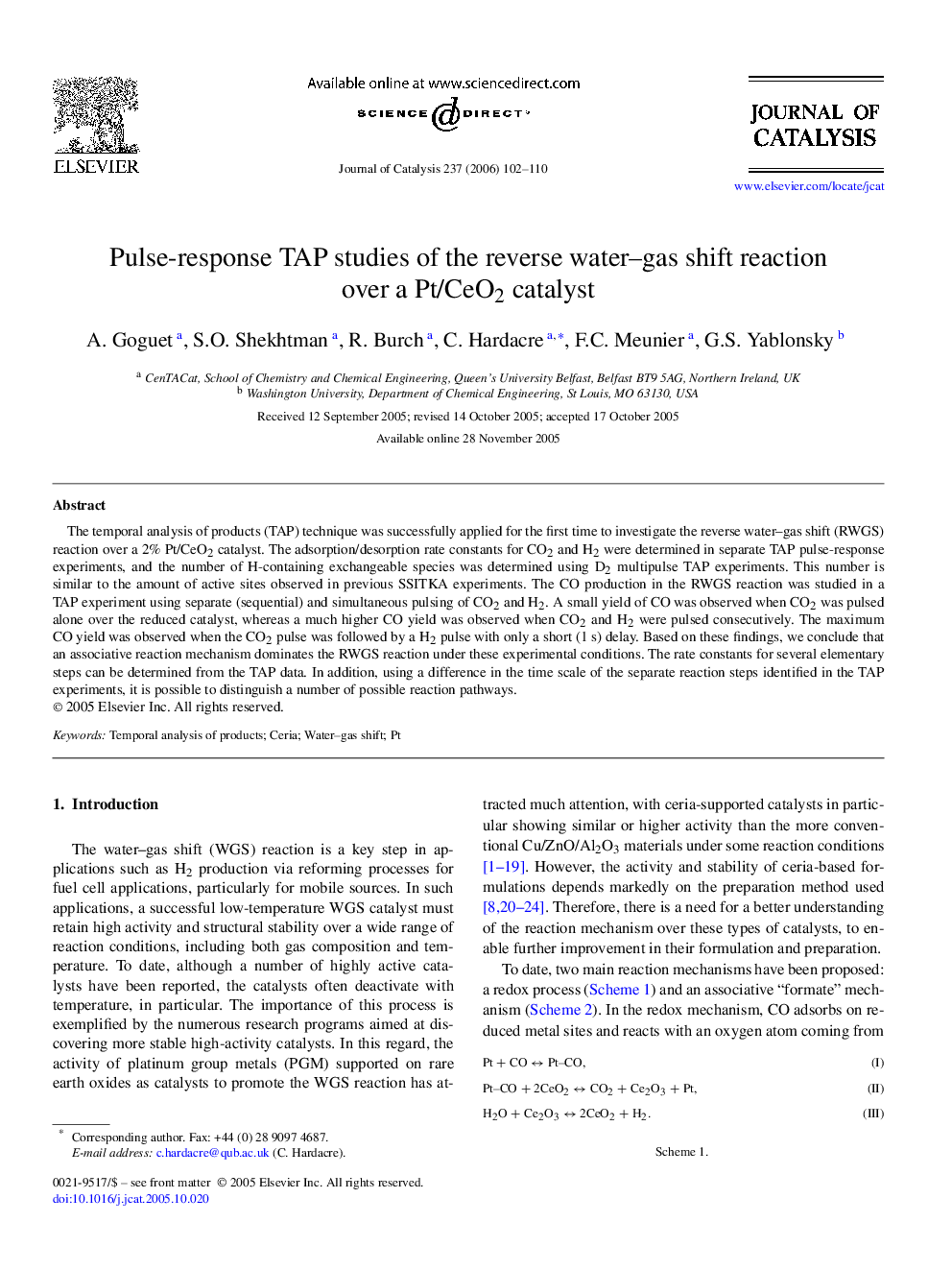| Article ID | Journal | Published Year | Pages | File Type |
|---|---|---|---|---|
| 63419 | Journal of Catalysis | 2006 | 9 Pages |
The temporal analysis of products (TAP) technique was successfully applied for the first time to investigate the reverse water–gas shift (RWGS) reaction over a 2% Pt/CeO2 catalyst. The adsorption/desorption rate constants for CO2 and H2 were determined in separate TAP pulse-response experiments, and the number of H-containing exchangeable species was determined using D2 multipulse TAP experiments. This number is similar to the amount of active sites observed in previous SSITKA experiments. The CO production in the RWGS reaction was studied in a TAP experiment using separate (sequential) and simultaneous pulsing of CO2 and H2. A small yield of CO was observed when CO2 was pulsed alone over the reduced catalyst, whereas a much higher CO yield was observed when CO2 and H2 were pulsed consecutively. The maximum CO yield was observed when the CO2 pulse was followed by a H2 pulse with only a short (1 s) delay. Based on these findings, we conclude that an associative reaction mechanism dominates the RWGS reaction under these experimental conditions. The rate constants for several elementary steps can be determined from the TAP data. In addition, using a difference in the time scale of the separate reaction steps identified in the TAP experiments, it is possible to distinguish a number of possible reaction pathways.
